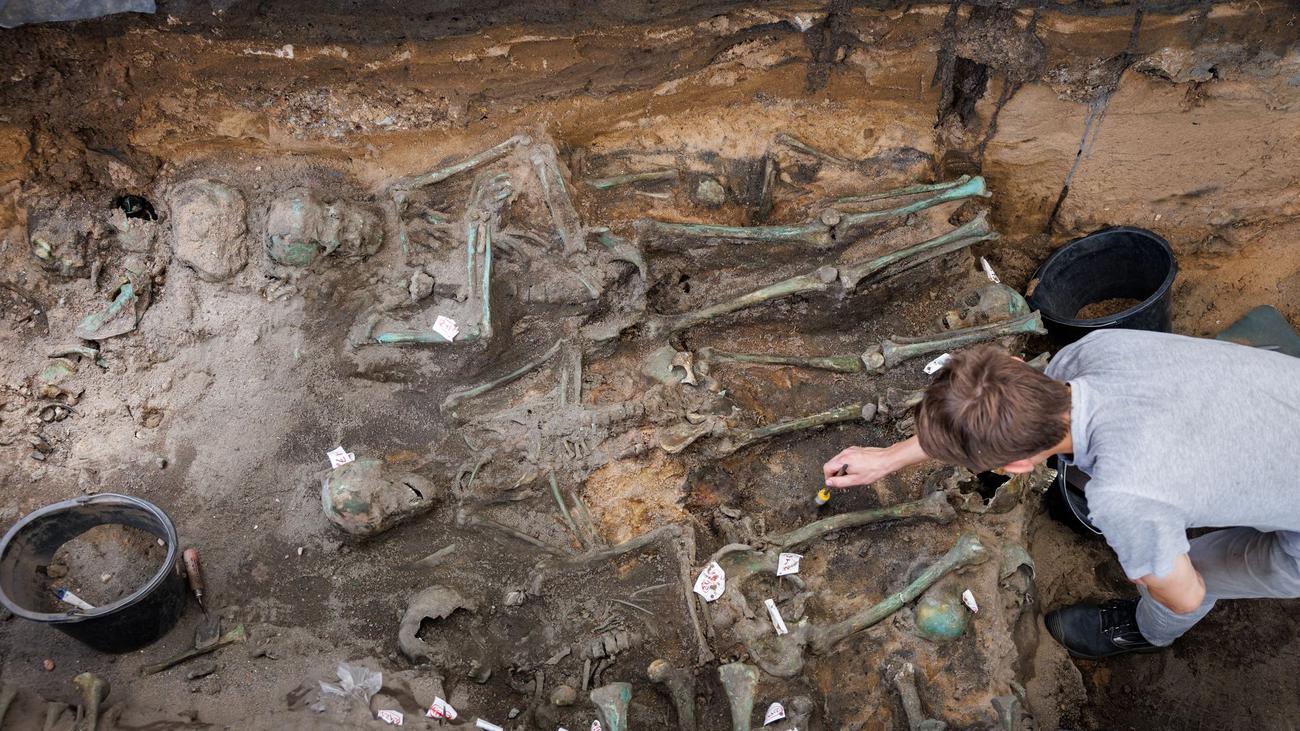
Unearthing the Horrors of the Past: A Major Exhibition on Nuremberg’s Vast Plague Cemetery
Nuremberg, Germany – The chilling discoveries from a massive plague cemetery in Nuremberg are set to be showcased in an exhibition later this year, offering a glimpse into one of the deadliest pandemics in human history.
A City’s Grim Legacy
The remains of over 3,000 individuals, victims of a devastating plague outbreak in the 17th century, were unearthed in a series of mass graves last year. "This is the largest archaeologically documented plague cemetery in Germany," remarks Melanie Langbein, the city’s archaeologist.
Among the deceased are women, men, and children, succumbing to the relentless grasp of the plague during the devastating wave of 1632/33. These tragic remains bear silent witness to the horrors that gripped Nuremberg during that era.
Scientific Insights and Ethical Considerations
Currently housed in a Bamberg excavation facility, the human remains are undergoing meticulous anthropological analysis to determine age, gender, and indications of disease or physical stress. The excavation team’s efforts also extend to the genetic realm, with samples collected from the victims’ molars to study the evolution of the plague pathogen.
As the excavation nears completion, the remains will be transferred to Nuremberg’s municipal archaeology depository. While the possibility of showcasing them in a major exhibition remains open, ethical considerations regarding the display of human remains necessitate careful deliberation.
The Delicate Balance of Remembrance and Respect
"The handling of human remains is a sensitive issue," explains Langbein. "Museums are increasingly grappling with the ethical implications of displaying such material." The exhibition team faces the challenge of striking a delicate balance between commemorating the victims and respecting their dignity.
A Journey of Discovery and Reflection
The upcoming exhibition promises to shed light on the devastating impact of the plague in early modern Europe. Through the examination of these ancient remains, researchers hope to gain insights into the genetic makeup of the pathogen, the demographic profile of its victims, and the social and cultural factors that influenced the spread of the disease.
Beyond the scientific revelations, the exhibition also serves as a sobering reminder of the fragility of life and the resilience of the human spirit in the face of adversity. By confronting the horrors of the past, we can better understand the challenges faced by our ancestors and the importance of preventing such devastation from recurring in the future.
Additional Information:
- The exhibition is expected to be held in Nuremberg’s city center for a limited time in the fall or winter of 2023.
- A larger, more comprehensive exhibition is planned for a later date, once more scientific analysis has been completed.
- Visitors to the exhibition will have the opportunity to learn about the historical context of the plague, the excavation process, and the latest research findings.
